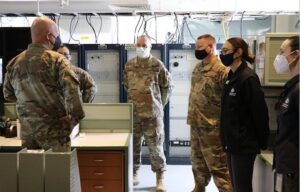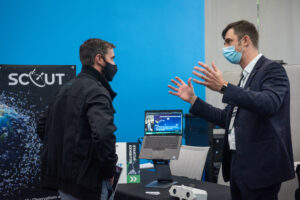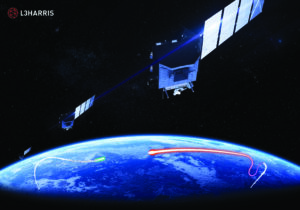Shake and Bake as NASA's Psyche tested in spacelike conditions
Tuesday, 05 April 2022 03:07 To prepare for its launch in August, the Psyche spacecraft was tested to ensure it can operate in the extreme conditions it will face on its trip to a metal-rich asteroid.
The conditions that a NASA spacecraft endures are extreme: the violent shaking and cacophony of a rocket launch, the jolt of separating from the launch vehicle, the extreme temperature fluctuations in and out of the Sun'
To prepare for its launch in August, the Psyche spacecraft was tested to ensure it can operate in the extreme conditions it will face on its trip to a metal-rich asteroid.
The conditions that a NASA spacecraft endures are extreme: the violent shaking and cacophony of a rocket launch, the jolt of separating from the launch vehicle, the extreme temperature fluctuations in and out of the Sun' Hubble finds a planet forming in an unconventional way
Tuesday, 05 April 2022 03:07 NASA's Hubble Space Telescope has directly photographed evidence of a Jupiter-like protoplanet forming through what researchers describe as an "intense and violent process." This discovery supports a long-debated theory for how planets like Jupiter form, called "disk instability."
The new world under construction is embedded in a protoplanetary disk of dust and gas with distinct spiral str
NASA's Hubble Space Telescope has directly photographed evidence of a Jupiter-like protoplanet forming through what researchers describe as an "intense and violent process." This discovery supports a long-debated theory for how planets like Jupiter form, called "disk instability."
The new world under construction is embedded in a protoplanetary disk of dust and gas with distinct spiral str Prenatal protoplanet upends planet formation models
Tuesday, 05 April 2022 03:07 An international research team has discovered a new planet so young that it has yet to emerge from the womb of matter where it is forming. This is the youngest protoplanet discovered to date.
It's location and the surrounding patterns of matter suggest that an alternative method of planet formation may be at work. This discovery could help to explain the histories and features of extrasola
An international research team has discovered a new planet so young that it has yet to emerge from the womb of matter where it is forming. This is the youngest protoplanet discovered to date.
It's location and the surrounding patterns of matter suggest that an alternative method of planet formation may be at work. This discovery could help to explain the histories and features of extrasola Early Universe bristled with starburst galaxies
Tuesday, 05 April 2022 03:07 In the first few billion years after the Big Bang, the universe contained far more so-called starburst galaxies than models predict. As many as 60 to 90 percent of the stars in the early universe appear to have been produced by galaxies undergoing a growth spurt. This is what an analysis of more than 20,000 distant galaxies show. The team, led by astronomers from University of Groningen (the Net
In the first few billion years after the Big Bang, the universe contained far more so-called starburst galaxies than models predict. As many as 60 to 90 percent of the stars in the early universe appear to have been produced by galaxies undergoing a growth spurt. This is what an analysis of more than 20,000 distant galaxies show. The team, led by astronomers from University of Groningen (the Net Kleos launches Patrol Mission satellites
Tuesday, 05 April 2022 03:07 Kleos Space S.A, (ASX: KSS, Frankfurt: KS1) a space-powered Radio Frequency Reconnaissance data-as-a-service (DaaS) company, successfully launched its third satellite cluster, the Patrol Mission on 01 April 2022 onboard the Transporter-4 SpaceX mission.
The D-Orbit Orbital Transfer Vehicle carrying the four Patrol Mission satellites has been successfully deployed into a 500km Sun Synchrono
Kleos Space S.A, (ASX: KSS, Frankfurt: KS1) a space-powered Radio Frequency Reconnaissance data-as-a-service (DaaS) company, successfully launched its third satellite cluster, the Patrol Mission on 01 April 2022 onboard the Transporter-4 SpaceX mission.
The D-Orbit Orbital Transfer Vehicle carrying the four Patrol Mission satellites has been successfully deployed into a 500km Sun Synchrono SwRI's Space System Integration Facility supports smallsat development
Tuesday, 05 April 2022 03:07 Southwest Research Institute has added a new, 74,000-square-foot Space System Integration Facility to its San Antonio headquarters. The SwRI facility can rapidly respond to customers needing to design, assemble and test spacecraft, particularly small satellites for emerging "new space" applications, including support for the commercial and U.S. Department of Defense arenas. The building is sched
Southwest Research Institute has added a new, 74,000-square-foot Space System Integration Facility to its San Antonio headquarters. The SwRI facility can rapidly respond to customers needing to design, assemble and test spacecraft, particularly small satellites for emerging "new space" applications, including support for the commercial and U.S. Department of Defense arenas. The building is sched Lockheed Martin releases open-source interface standard for on-orbit docking
Tuesday, 05 April 2022 03:07 Lockheed Martin has released an open-source, non-proprietary interface standard to support on-orbit docking within the industry.
With unity of effort in mind, Lockheed Martin has published this Mission Augmentation Port (MAP) interface standard online to support industry approaches to on-orbit servicing and mission augmentation. Those interested in incorporating the standard in their space
Lockheed Martin has released an open-source, non-proprietary interface standard to support on-orbit docking within the industry.
With unity of effort in mind, Lockheed Martin has published this Mission Augmentation Port (MAP) interface standard online to support industry approaches to on-orbit servicing and mission augmentation. Those interested in incorporating the standard in their space Xplore acquires Major Tom cloud-based mission operation software and Kubos flight software
Tuesday, 05 April 2022 03:07 Xplore Inc., a commercial space company providing Space as a Service, has announced it has acquired the assets of Kubos Corporation and its Major Tom mission and flight control software platform for satellites.
Major Tom enables mission operations for more than a dozen satellites currently on orbit for commercial and government customers. In a seamless transition to Xplore, key Kubos emplo
Xplore Inc., a commercial space company providing Space as a Service, has announced it has acquired the assets of Kubos Corporation and its Major Tom mission and flight control software platform for satellites.
Major Tom enables mission operations for more than a dozen satellites currently on orbit for commercial and government customers. In a seamless transition to Xplore, key Kubos emplo Satellogic launches 5 more satellites on SpaceX Transporter-4 mission
Tuesday, 05 April 2022 03:07 Satellogic Inc. (NASDAQ: SATL), a leader in sub-meter resolution satellite imagery collection, has announced the launch of five additional spacecraft from Cape Canaveral Space Force Station. The satellites were delivered to a sun-synchronous low-Earth orbit on SpaceX's Transporter-4 mission on April 1, 2022 onboard the Falcon 9 reusable, two-stage rocket, under SpaceX's Rideshare program. All fi
Satellogic Inc. (NASDAQ: SATL), a leader in sub-meter resolution satellite imagery collection, has announced the launch of five additional spacecraft from Cape Canaveral Space Force Station. The satellites were delivered to a sun-synchronous low-Earth orbit on SpaceX's Transporter-4 mission on April 1, 2022 onboard the Falcon 9 reusable, two-stage rocket, under SpaceX's Rideshare program. All fi BlackSky expands constellation to 14 satellites
Tuesday, 05 April 2022 03:07 BlackSky's (NYSE: BKSY) newest satellites successfully began revenue-generating commercial operations for customers, taking high-resolution images and creating analytics within a company record of 12 hours after launch.
The company expanded its constellation from 12 to 14 high-resolution satellites following the successful RocketLab launch
Without Mission a Beat" on Saturday, April 2. Th
BlackSky's (NYSE: BKSY) newest satellites successfully began revenue-generating commercial operations for customers, taking high-resolution images and creating analytics within a company record of 12 hours after launch.
The company expanded its constellation from 12 to 14 high-resolution satellites following the successful RocketLab launch
Without Mission a Beat" on Saturday, April 2. Th Benchmark to triple production capacity to meet demand
Tuesday, 05 April 2022 03:01
Satellite propulsion startup Benchmark Space Systems announced plans April 5 to triple production capacity to meet growing demand for its Starling and Halcyon propulsion systems.
The post Benchmark to triple production capacity to meet demand appeared first on SpaceNews.
Military space chiefs from 15 countries gather amid growing security concerns
Tuesday, 05 April 2022 01:25
The United States this week will host the third gathering of international military space chiefs in Colorado Springs.
The post Military space chiefs from 15 countries gather amid growing security concerns appeared first on SpaceNews.
Six bases selected as candidate locations for U.S. Space Force training command
Monday, 04 April 2022 23:39
The Department of the Air Force on April 4 announced six Space Force bases in Colorado, Florida and California are candidate locations for the headquarters of the U.S. Space Force’s Space Training and Readiness Command.
Space Force looking to ease barriers to entry for commercial companies
Monday, 04 April 2022 21:32
A new Commercial Space Futures Office is helping the Space Force analyze the technical and financial wherewithal of commercial space companies.
The post Space Force looking to ease barriers to entry for commercial companies appeared first on SpaceNews.
New L3Harris space boss says it’s time to rethink risk tolerance
Monday, 04 April 2022 21:27
With China and Russia embracing hypersonic weapons capable of evading U.S. missile shields, the Pentagon is spending billions of dollars on infrared sensor satellites to counter the threat. Kelle Wendling, the new president of L3Harris Technologies’ Space Systems sector, says U.S.

